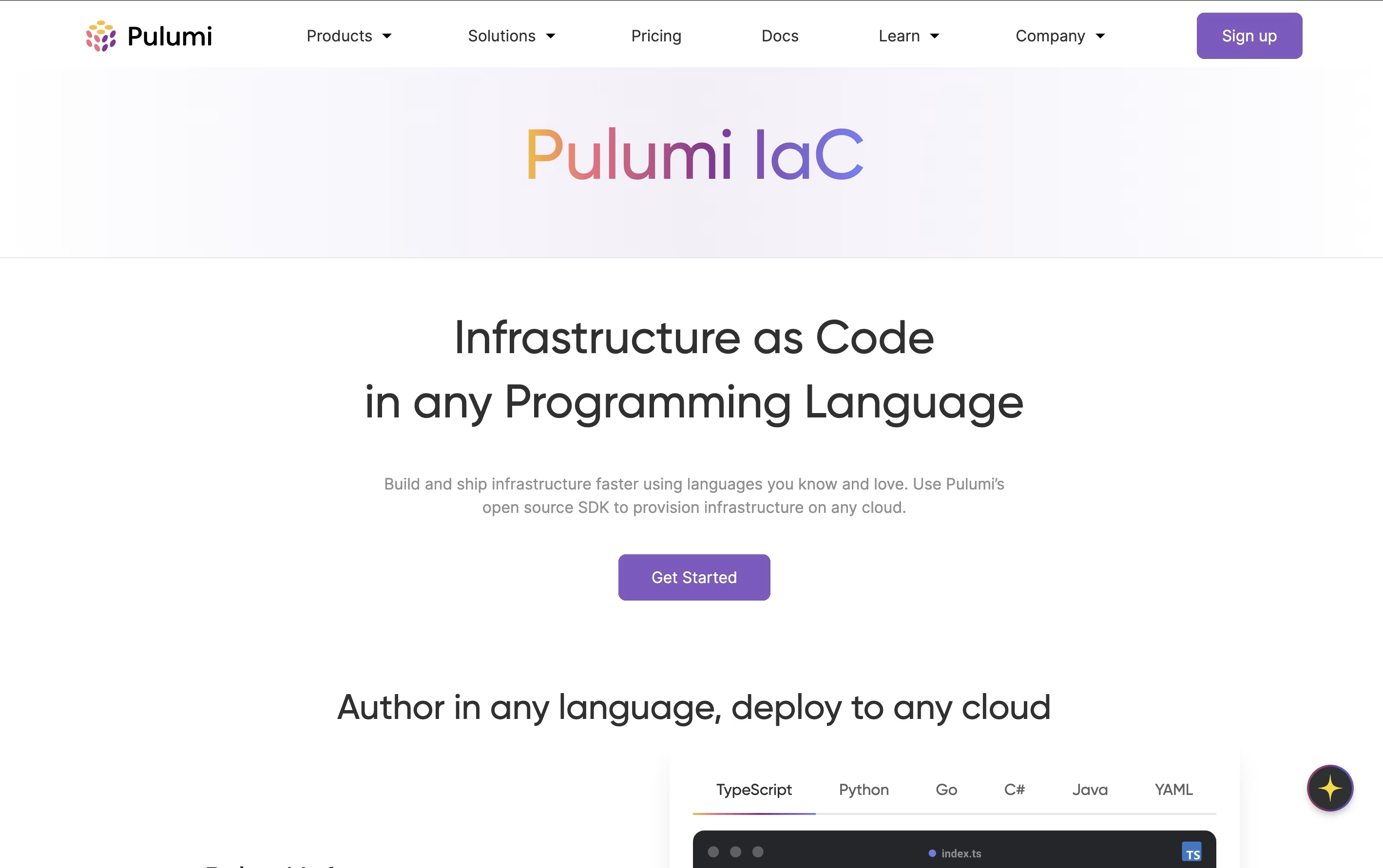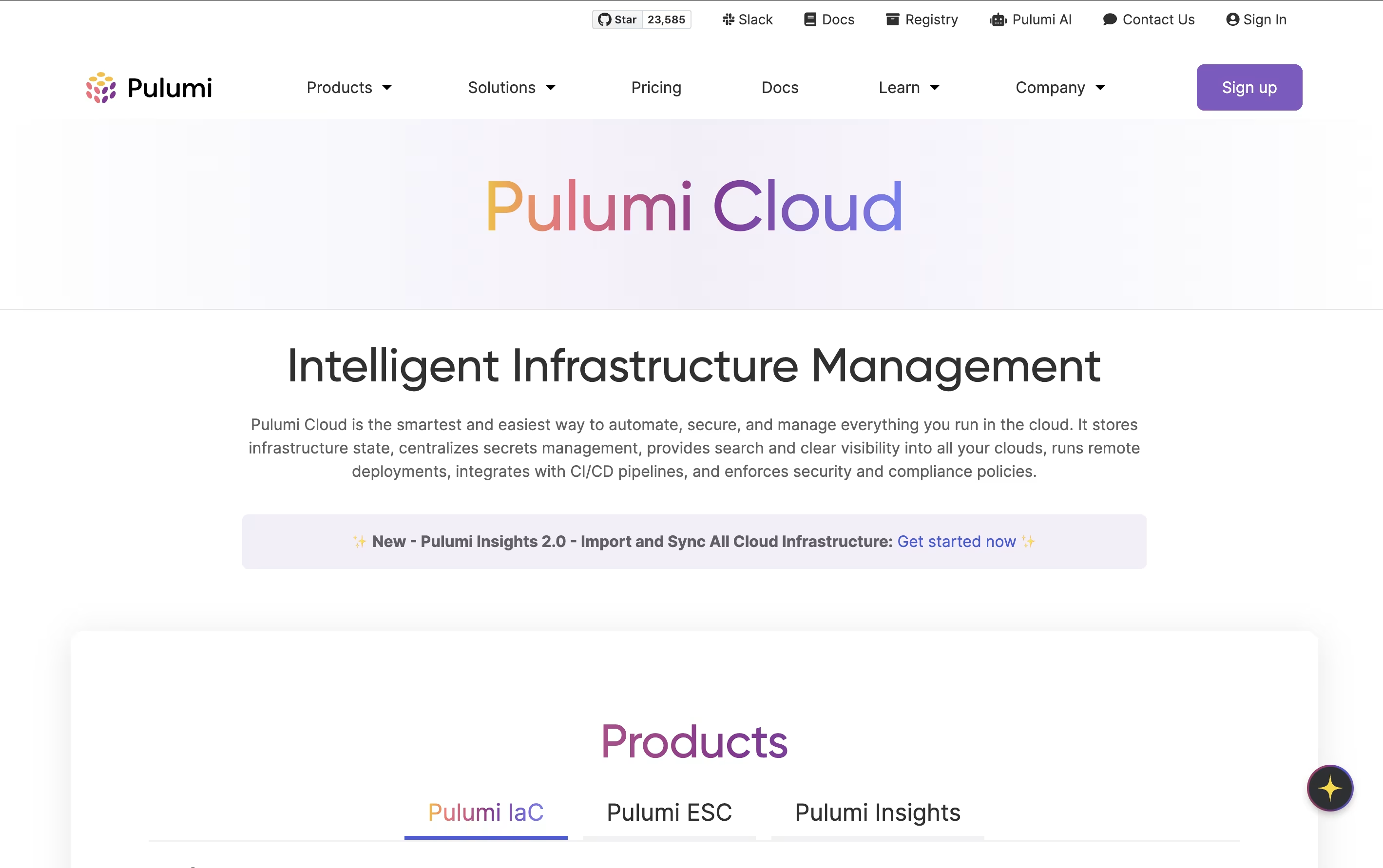
Pulumi
Pulumi is an open-source infrastructure as code platform enabling developers to manage cloud infrastructure using familiar programming languages.





What is Pulumi
Pulumi is an open-source infrastructure as code platform that allows developers to define, deploy, and manage cloud infrastructure using familiar programming languages instead of proprietary domain-specific languages. Think of it as bringing software engineering practices to infrastructure management.
The platform consists of three main products: Pulumi IaC for infrastructure management, Pulumi ESC for secrets and configuration management, and Pulumi Insights for AI-powered infrastructure analytics. What sets Pulumi apart is its use of real programming languages, enabling developers to write infrastructure code with loops, conditionals, functions, and all the features they're used to.
Pulumi manages infrastructure declaratively while providing the flexibility of imperative programming. Each resource is tracked and managed through state files, ensuring consistent and predictable deployments. The platform integrates with existing CI/CD pipelines and supports policy as code for security and compliance requirements.
How to Use Pulumi
Getting started with Pulumi is straightforward for any developer familiar with programming languages. First, install the Pulumi CLI on your system and choose your preferred cloud provider and programming language.
Here's the basic workflow:
Create a new project using pulumi new command with your chosen template
Write infrastructure code using your preferred language (Python, TypeScript, Go, etc.)
Configure your cloud credentials and project settings
Preview changes with pulumi preview to see what will be created
Deploy infrastructure using pulumi up command
Manage updates and destroy resources when needed
Best practices include:
Use Pulumi's component resources to create reusable infrastructure patterns
Leverage the Pulumi Registry for pre-built components and providers
Implement proper state management with Pulumi Cloud or self-hosted backends
Set up CI/CD integration for automated deployments
Use policy packs to enforce security and compliance rules
The platform remembers your infrastructure state, making updates and changes seamless and predictable.
Features of Pulumi
Multi-language programming (TypeScript, Python, Go, .NET, Java, YAML)
170+ cloud and SaaS provider support
Real-time infrastructure preview and validation
Built-in testing and policy enforcement
Secrets and configuration management
AI-powered infrastructure insights
GitOps and CI/CD integration
Component libraries and reusable patterns
Team collaboration and state management
Open-source with enterprise features
Pulumi Pricing
Free
Free
- 200 free IaC resources
- 25 free secrets
- 500 free deployment minutes
- Unlimited projects and stacks
- Community support
- Basic CI/CD integrations
Team
$0.37 /mo
- Everything in Free plus
- $0.37 per resource/month after 200 free
- Up to 10 team members
- Secure team collaboration
- Automatic CI/CD
- Unlimited ESC configuration
- Full deployment history
Enterprise
$1.1 /mo
- Everything in Team plus
- $1.10 per resource/month
- Unlimited members and teams
- Role-based access control (RBAC)
- SAML/SSO authentication
- Organization access tokens
- Audit logs
- 12x5 Enterprise Support
Business Critical
Custom
- Everything in Enterprise plus
- Volume pricing and invoicing
- Policies and compliance
- Automatic group sync (SCIM)
- Audit logs export
- 24x7 Enterprise Support
- Private Slack channel
- Professional Services
Pulumi Use Cases
Who Can Benefit from Pulumi
Pulumi Repository
View on Github| Stars | 24,160 |
| Forks | 1,259 |
| Repository Age | 9 years |
| Last Commit | 19 days ago |
FAQ's About Pulumi
Share your experience with Pulumi
See what users are saying about Pulumi
0 Reviews
No reviews yet
Be the first to review Pulumi
Embed Pulumi badges
Show your community that Pulumi is featured on Tool Questor. Add these beautiful badges to your website, documentation, or social profiles to boost credibility and drive more traffic.






